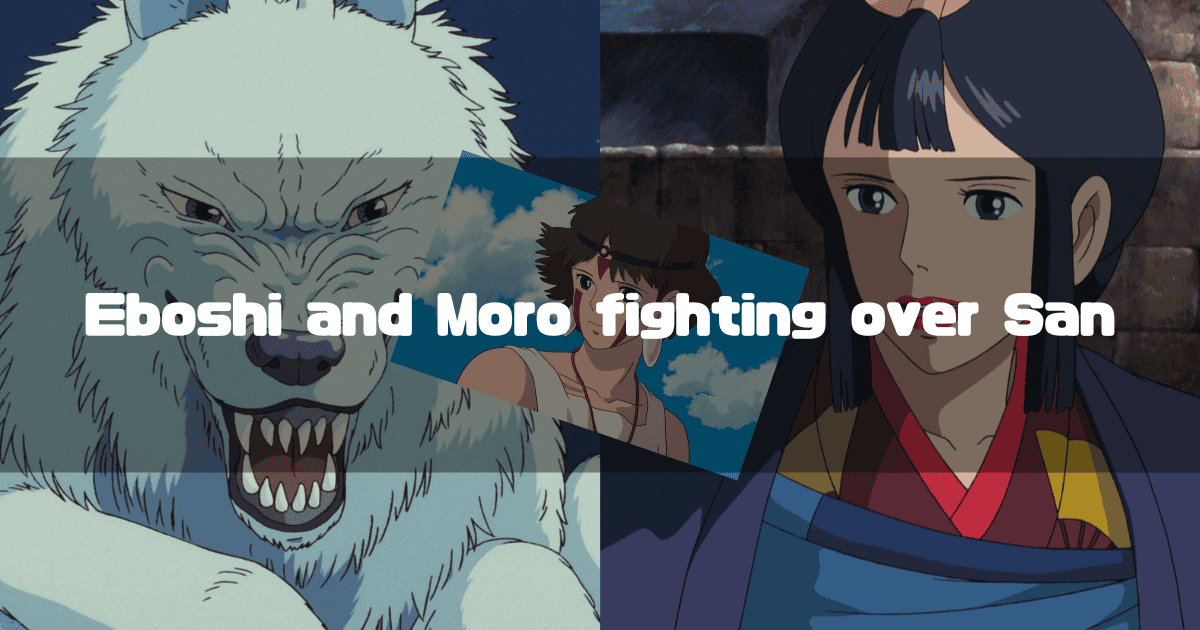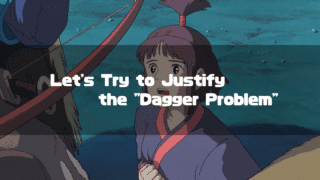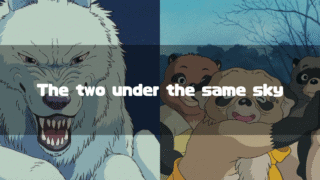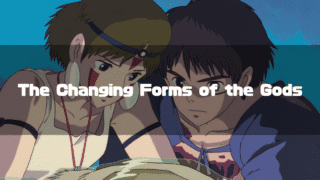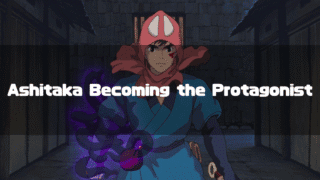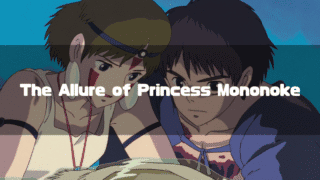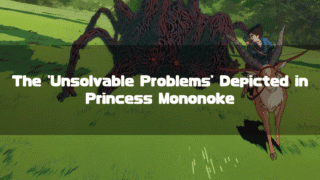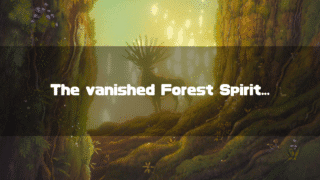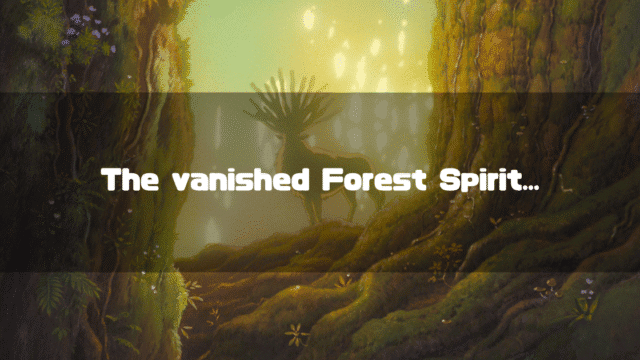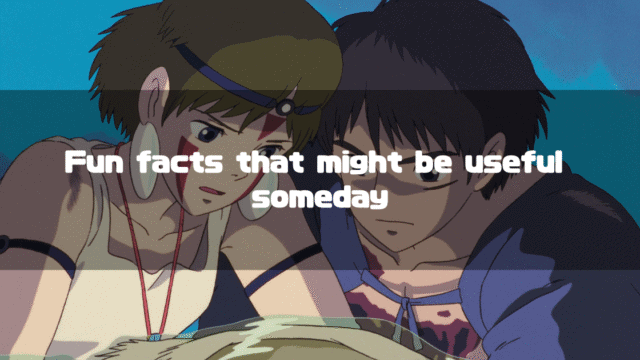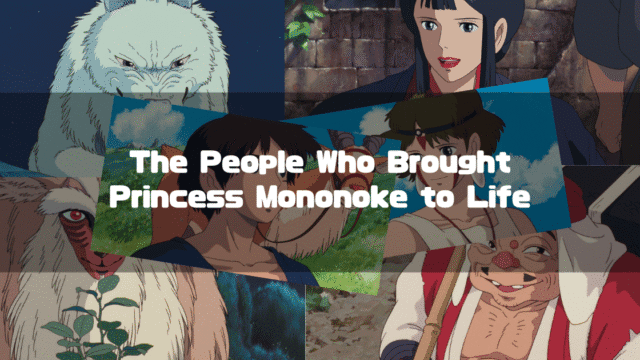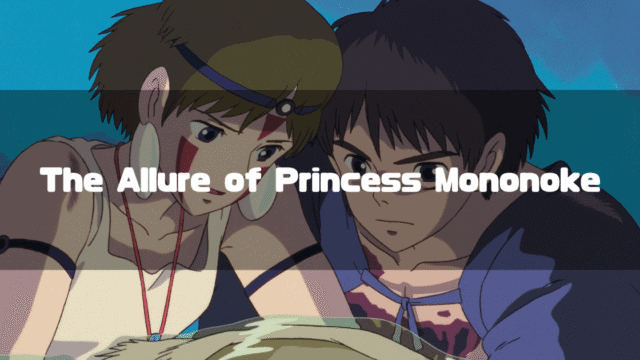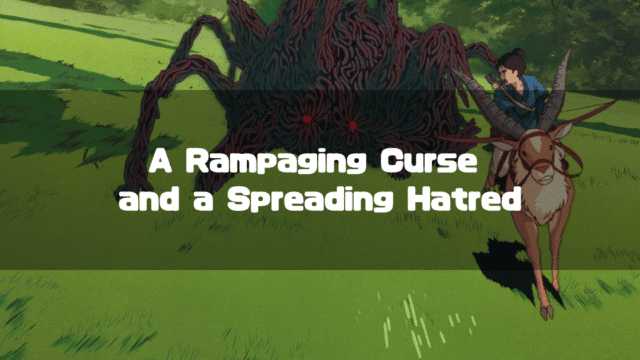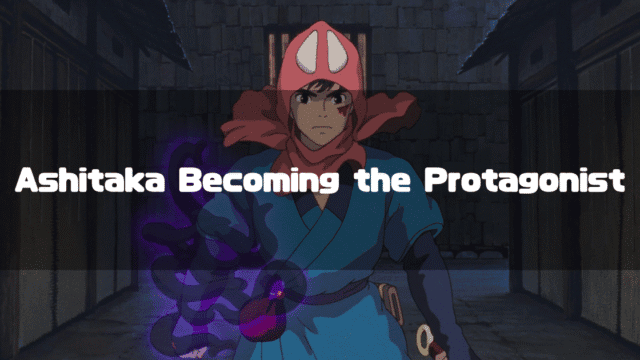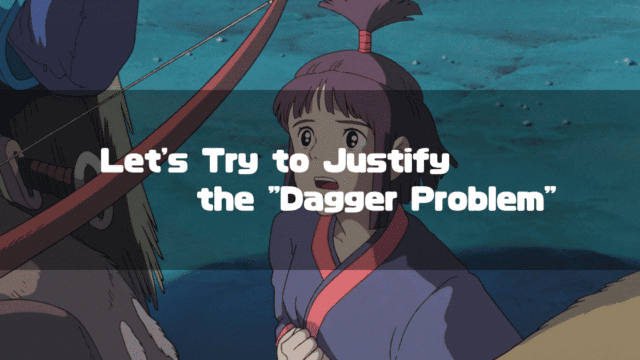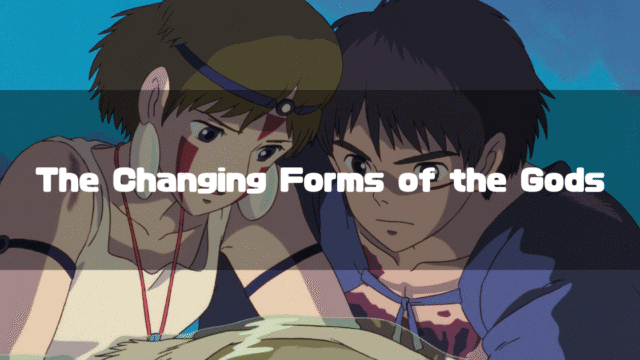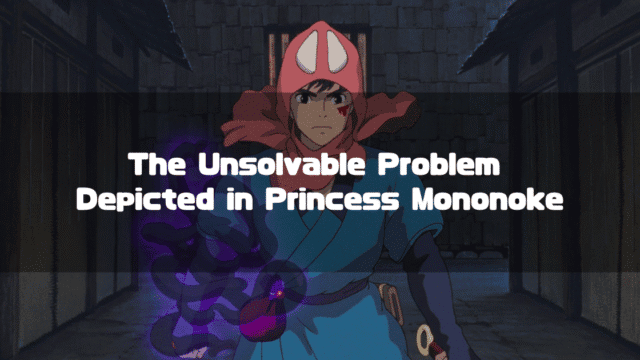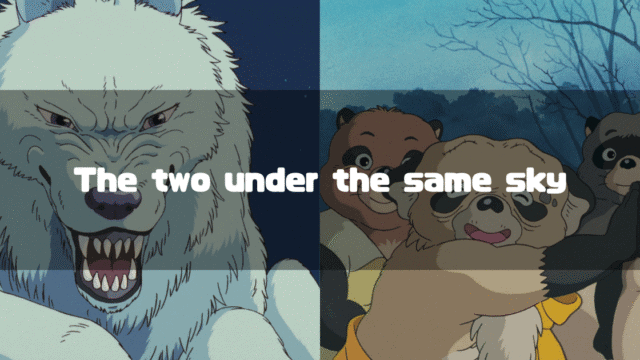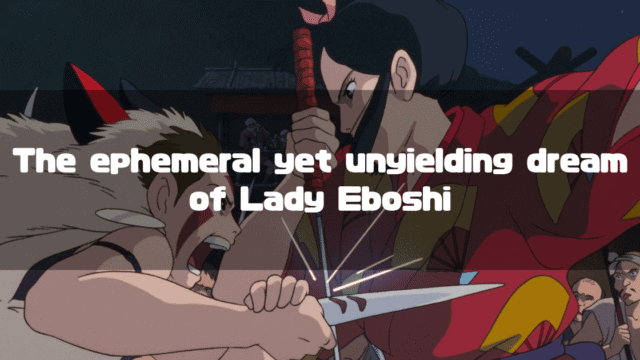Princess Mononoke(Studio Ghibli Official) is a feature-length animated film directed by Hayao Miyazaki, released in 1997.
This time, I’d like to think about the mysterious circumstances surrounding San in Princess Mononoke.
The main character in this mystery is Lady Eboshi.
Throughout Princess Mononoke, Lady Eboshi, who shows a ruthless side in many scenes, strangely seems to show a sympathetic attitude only towards San.
What could be the root of this attitude of Lady Eboshi towards San?
And another character is Moro.
Watching Princess Mononoke normally, there’s nothing strange, but if you think about it for a moment, there seems to be some contradiction in Moro’s actions as well.
To consider this issue, I will first look back at the depiction of the sympathetic Lady Eboshi towards San and the contradiction of Moro, and finally, I will consider three possibilities for why these depictions were made.
Why did Lady Eboshi take a sympathetic attitude towards San, and why did Moro act contradictorily?
*This article is an English translation of the original Japanese article, 【もののけ姫】サンに対するエボシの同情の謎とサンを育てるモロの矛盾.
Let an AI walk you through the highlights of this post in a simple, conversational style.
- Lady Eboshi is unusually sympathetic towards San
Eboshi, who has a cool-headed judgment, shows a sense of composure towards San, saying things like, “The Princess Mononoke will also return to being human.” This suggests she has special feelings beyond just an adversary. - Moro has a contradiction between “hating humans” and “raising San”
It is a clear contradiction that Moro, who speaks of her hatred for humans, raised the infant San. However, human cultural biases that “dogs are man’s best friend” and director Hayao Miyazaki’s feelings for dogs may have influenced this depiction. - The theory that San is Eboshi’s daughter can explain both contradictions at once
If we assume that San is Eboshi’s daughter, both Eboshi’s sympathetic attitude and Moro’s intense hostility towards Eboshi can be naturally explained. Although there is no definitive evidence, it is a strong theory with excellent explanatory power. - San is a “mirror” for Lady Eboshi, projecting Eboshi’s own past
San’s aggression towards human society and her loneliness overlap with Eboshi’s own past, where she was once tormented by the human world. It is also conceivable that Eboshi saw herself in San, which is why she felt sympathy for her.
Lady Eboshi’s Attitude Towards San and Moro’s Contradiction
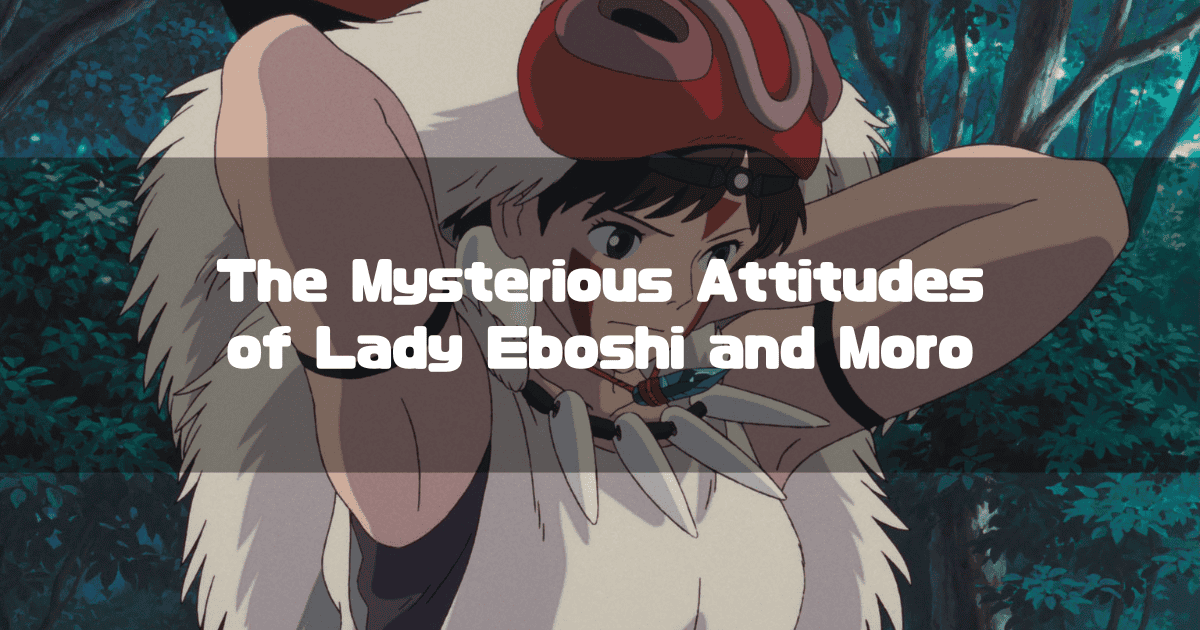
The Depiction of a Sympathetic Lady Eboshi Towards San
First, I’d like to look back at Lady Eboshi’s sympathetic attitude towards San, but before that, we need to recall her ruthless side.
In the main story of Princess Mononoke, Lady Eboshi:
- Showed no sympathy at all for the men who fell into the valley during the wolf attack, and
- Did not return to Irontown when it was being attacked by local samurai at the end of the story.
These decisions might be better described as “unavoidable” rather than “ruthless,” but the problem is the speed of her judgment. Lady Eboshi makes the above decisions without any hesitation.
However, Lady Eboshi says the following to San:
Without that ancient god the animals here would be nothing but dumb beasts once more. When the forest has been cleared and the wolves wiped out, this desolate place will be the richest land in the world, and Princess Mononoke will become human.
Furthermore, when San attacked Irontown, she greeted San, who was trying to take her life, with a grin, and even when Ashitaka joined the fight, she continued to talk while handling the situation.
In other words, couldn’t Eboshi have dealt with San in an instant if she had wanted to?
There must be a reason why she remained so composed. What could it have been?
Of course, there is no doubt that Lady Eboshi intended to “let the women whose husbands were taken get their revenge directly.” In other words, to incapacitate San and let them deliver the final blow.
However, in the following text, I will deliberately ignore this point and proceed with the idea that there might have been other intentions as well.
Moro’s Contradiction
Watching Princess Mononoke normally, you don’t feel any contradiction in Moro, but she is actually a being with a fundamental contradiction.
That is, Moro has the contradiction of “attacking humans while having saved San.”
According to Moro’s words, San is:
I caught her human parents defiling my forest. They threw their baby at my feet as they ran away.
If Moro hated humans, she could have eaten San right there, even if she was an infant. But the fact is, she didn’t.
I think this is a clear contradiction, but the reason we don’t feel a contradiction here is influenced by the fact that we think of dogs as humanity’s best friend.
And most importantly, there is the fact that Director Miyazaki himself had a dog when he was a child. And in the documentary How Princess Mononoke Was Born, there is a scene where he seems to be in agony while checking the key animation of a wolf god panting “hah, hah” with its tongue out. There, Director Miyazaki says,
“I can’t help but remember the dog I used to have.”
(Original Text, in Japanese)
「つい、自分の飼っていた犬を思い出す。」
He then asks for opinions on the key animation of that scene from the main staff, including animation director Masahiko Ando, but doesn’t seem to get a clear answer and ends up saying something like,
“You see, you didn’t grow up with a dog that was your other half as a child…”
(Original Text, in Japanese)
「やっぱりね、子供の頃に一心同体の犬と育たなかった・・・」
This must have been very difficult for the staff.
But would Director Miyazaki, who feels this way about dogs, depict a wolf god as a being that only hates humans?
There must be a reason for Moro’s “contradiction” as well.
From here, I will consider various possibilities to rationalize the above depictions.
The first one I’ll consider is the well-known theory on the internet, San is Eboshi’s daughter.
Lady Eboshi and Moro’s Feelings for San
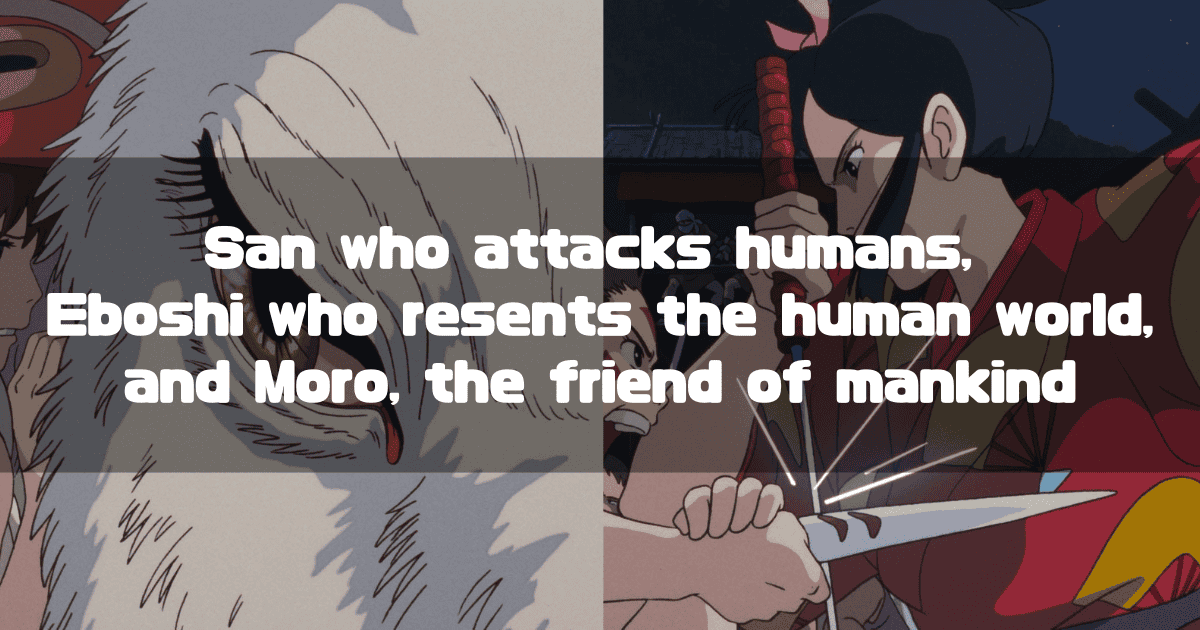
Possibility ①: San is Lady Eboshi’s Daughter
One theory that resolves the unease regarding the contradictions of Lady Eboshi and Moro is the San is Eboshi’s child theory.
There is no definitive evidence, but the most interesting part of this theory is its explanatory power.
In other words, if we think of San as Eboshi’s child…
- Eboshi is sympathetic to San because she is her own child.
- Moro shows extreme hatred towards Eboshi not just because she is the leader of Irontown, but because she is the very person who abandoned “her daughter,” San.
This is what it would mean. In particular, the brilliant part of this theory is how it splendidly resolves Moro’s contradiction.
The reason Moro, who couldn’t hate humans from the bottom of her heart, detested Lady Eboshi so much was because she abandoned San.
Of course, there is no definitive evidence for this theory, but let’s look at the following image, for example:

Don’t they have strikingly similar faces? That doesn’t necessarily mean they are parent and child, but it’s not unreasonable to think it’s hinting at something.
However, looking at the depictions in the movie, it seems that Lady Eboshi came to Irontown, that is, the Forest of the Deer God, just before eliminating Nago (the Tatari-gami that attacked Ashitaka’s village) from the forest. Therefore,
- Lady Eboshi once lived near the Forest of the Deer God, and at that time, she abandoned San,
- After that, she was forced to be the wife of a Wako pirate leader,
- She escaped the Wako pirates with Gonza after killing the leader,
- Then she returned to the Forest of the Deer God and reunited with San.
Would that be the sequence of events? It does feel a bit forced to require the fact that “Lady Eboshi once lived near the Forest of the Deer God.”
Nevertheless, the “explanatory power” of this theory is extremely high.
Thus, the San is Lady Eboshi’s daughter theory is an excellent one that can explain everything, but I don’t know who was the first person to state this publicly. If anyone knows, please let me know in the comments. Who was the first to notice this? I want to cite that text.
Possibility ②: Eboshi Once Abandoned Her Own Daughter
If the San is Lady Eboshi’s daughter theory has a slight stretch, there is one way to resolve it.
That is, perhaps Lady Eboshi once abandoned her own daughter?
Lady Eboshi has a past of being forced to be the wife of a Wako pirate leader. It’s possible she had a child during that time.
It would have been good if she could have escaped with that child, but maybe she couldn’t and had to abandon her own daughter.
It’s also possible she had a child before that. In that case, she would have had to abandon the child when she was taken by the Wako pirates.
As a result, Lady Eboshi may have lived with the determination to never abandon those who have been abandoned.
Bringing all the sold women to Irontown might be a part of that.
Well, this idea is the same as Possibility ① in that it “lacks definitive evidence,” and while it doesn’t require the stretch of Eboshi living near the Forest of the Deer God, it cannot explain Moro’s contradiction at all.
Personally, I don’t think it’s a bad theory, but in terms of explanatory power, it’s inferior to Possibility ①.
Possibility ③: Because San is a Mirror of Eboshi Herself
I’ve considered various things so far, but it’s clear that each has some flaws. Since there is no definitive evidence, it can’t be helped, but it’s also important to explore a perspective that doesn’t center on Eboshi’s daughter, whose existence is uncertain.
In Possibility ① and Possibility ②, what we have ignored is “Lady Eboshi’s inner self.” I have summarized my personal thoughts on what Lady Eboshi was trying to achieve in the main story of Princess Mononoke in the following article:
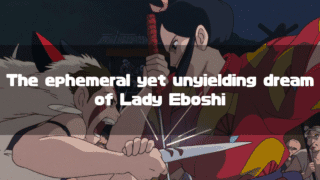
The word “kunikuzushi” (toppling the country) appears in the main story. That’s certainly true, but in that era, “kunikuzushi” would mean overturning the state of that region. It wouldn’t be about overthrowing the country of Japan.
However, what Lady Eboshi was probably aiming for was to overturn Japan (or the world).
She was trying to take revenge on “the present” itself, which had caused her indescribable suffering, sorrow, and humiliation.
How did San appear to such a Lady Eboshi?
Looking back on San’s life,
- She was abandoned by her own parents for their own self-interest,
- Raised by the wolf gods who were partly responsible for her situation,
- While deeply loving the wolf gods and the forest that raised her and living as a wolf god,
- She became aware of the contradiction of having a human body,
- And tried to protect her identity with limitless aggression towards the human world.
This seems to be the case. The important thing, of course, is “aggression towards the human world.”
Lady Eboshi is also seriously considering “kunikuzushi,” but what she is trying to destroy is, after all, “the world of men.” What tormented her were not gods, wolf gods, or boars.
And, San stands with the wolf gods who have not tormented Lady Eboshi, and attacks the human world that has tormented her.
In other words, San is currently executing what Lady Eboshi has been meticulously preparing and trying to execute.
It’s no wonder that Lady Eboshi took a sympathetic attitude towards such a San. Looking at San must have been like looking at herself. For Lady Eboshi, San was a mirror reflecting herself.
Thinking this way, “Moro’s contradiction” cannot be explained, but… maybe it’s fine to just go with “dogs are humanity’s best friend.”
It’s natural to fight back against humans who attack you, and it’s the kindness of a dog to raise an infant who is there. That’s why humans have lived with dogs for so long. It’s important that we, at least, live in a way that we do not betray dogs. Even though the reality surrounding dogs is extremely harsh.
The above is everything I have personally researched and thought about regarding the reason why Lady Eboshi was sympathetic to San. What do you all think? I think Princess Mononoke is a story where you can always make new discoveries.
The images used in this article are from Studio Ghibli Works Still Images.
About the Author
Recent Posts
- 2025-10-15
Indiana Jones and the Dial of Destiny(2023):Historical Background-WWII, the Real Dr. Schmidt, the Siege of Syracuse, and the Antikythera Mechanism - 2025-10-08
Why Does Children Who Chase Lost Voices Feel So Ghibli-esque? [Makoto Shinkai’s “Tale of Farewell”] - 2025-10-07
5 Centimeters per Second: Characters, Voice Actors, Character Analysis and Character Map - 2025-10-06
5 Centimeters per Second: Full Synopsis, Analysis, Ending Explained & Character Map (Spoilers) - 2025-10-04
5 Centimeters per Second Is Neither Depressing Nor Terrible: A Positive Interpretation of the Film

